Importing Layers from the Library and Other Modules
When creating your own modules and looking for a kickstart you're not restricted to importing slides. You can also import complete individual layers.
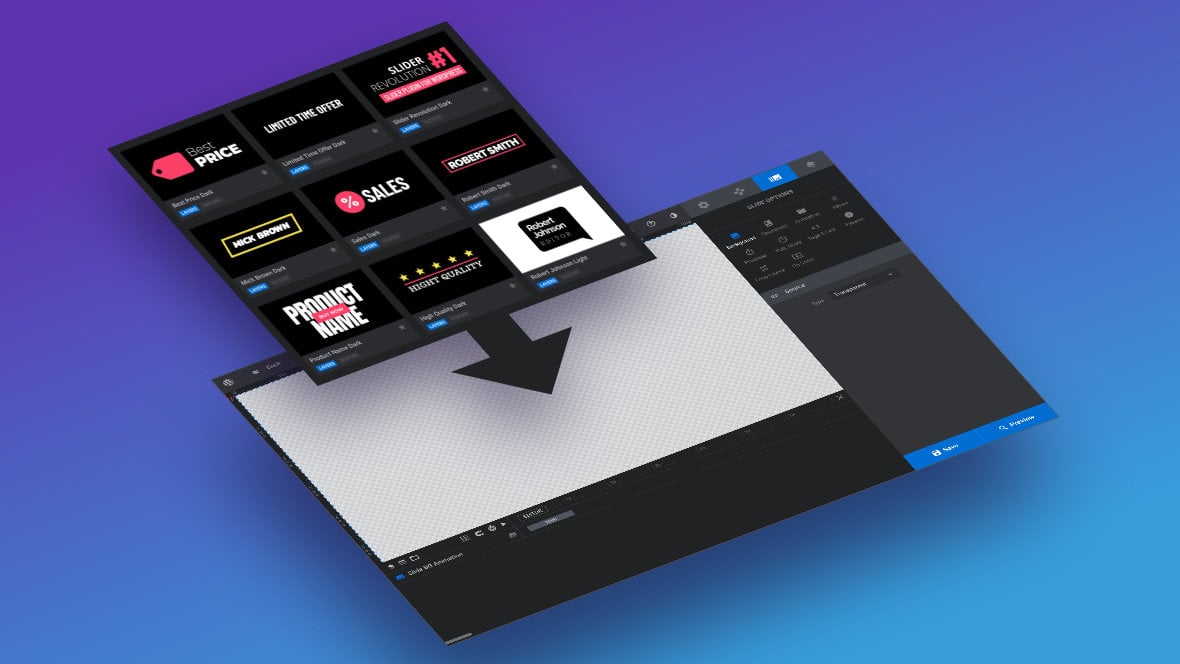
Table of Contents
Importing Layers (Video Tutorial)
Learn how to import layers from the Layer Library or from other modules by watching the below ‘Using Pre-made Content in Your Own Modules’ tutorial video from the 01:52 mark:
If you watched the above video in full you can skip to the next section of the manual: Animation Fundamentals.
Or continue reading to learn about the two way of importing layers into your own modules.
The Two Ways to Import Layers
There are two ways you can import pre-made layers [?]
Layers are containers for visual, audio or layout items and are added to slides. For example, text, button, image, audio, video, group and row are all types of layers.
Layers are added to slides via the module editor. into a module [?]
A module in Slider Revolution acts as a container for slides, which in turn act as containers for layers. Modules are created and edited with the module editor.
A "module" is a single, self contained piece of content. You can think of this as being similar to the way a post or page in regular WordPress is a self contained piece of content.
A module can represent any kind of content Slider Revolution is capable of creating, such as a slider, carousel, hero unit, navigation menu, posts display and so on.
Multiple modules can be combined to form rich content such as complete sites and landing pages. you are working on. The first is from the Layer Library, a collection of ready-to-use layers that comes bundled with Slider Revolution, and the second is from other modules you previously created.
To start the process of importing a layer, hover over the Add Layer menu in the Top Toolbar, then at the bottom of the dropdown that appears you will see the items Layer Library and Import Layer:
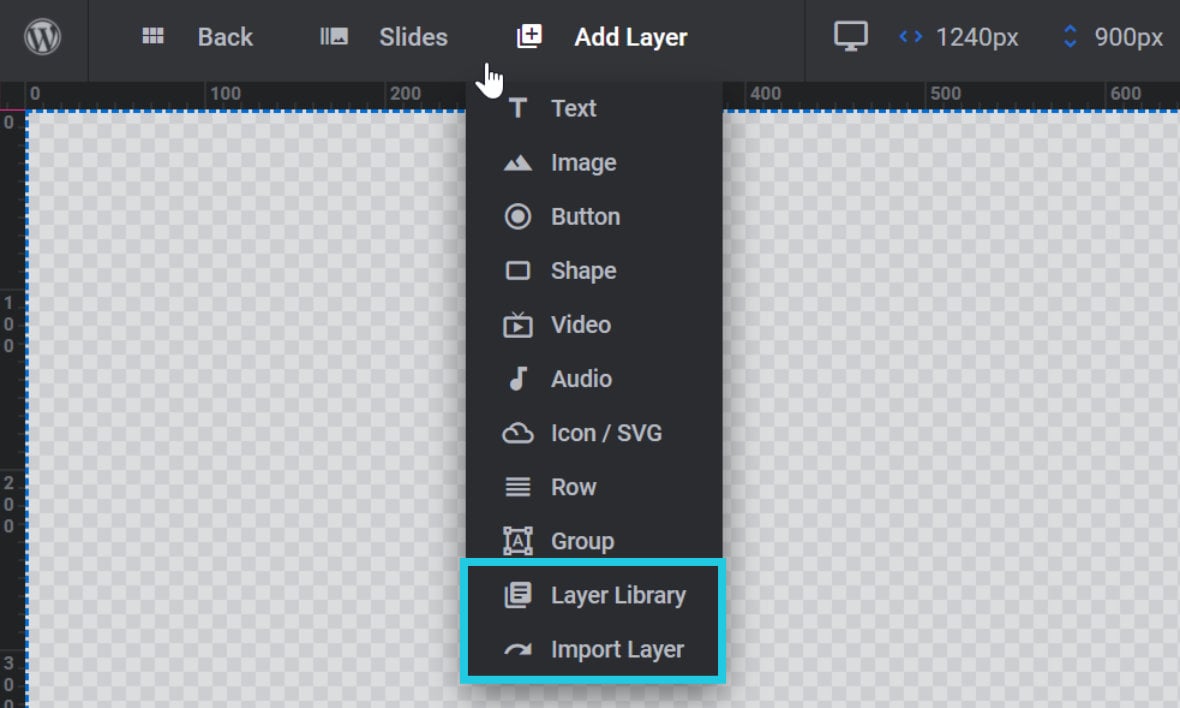
Let’s see what each of these can do.
Layer Library
When you click Layer Library a collection of pre-made layers will appear:
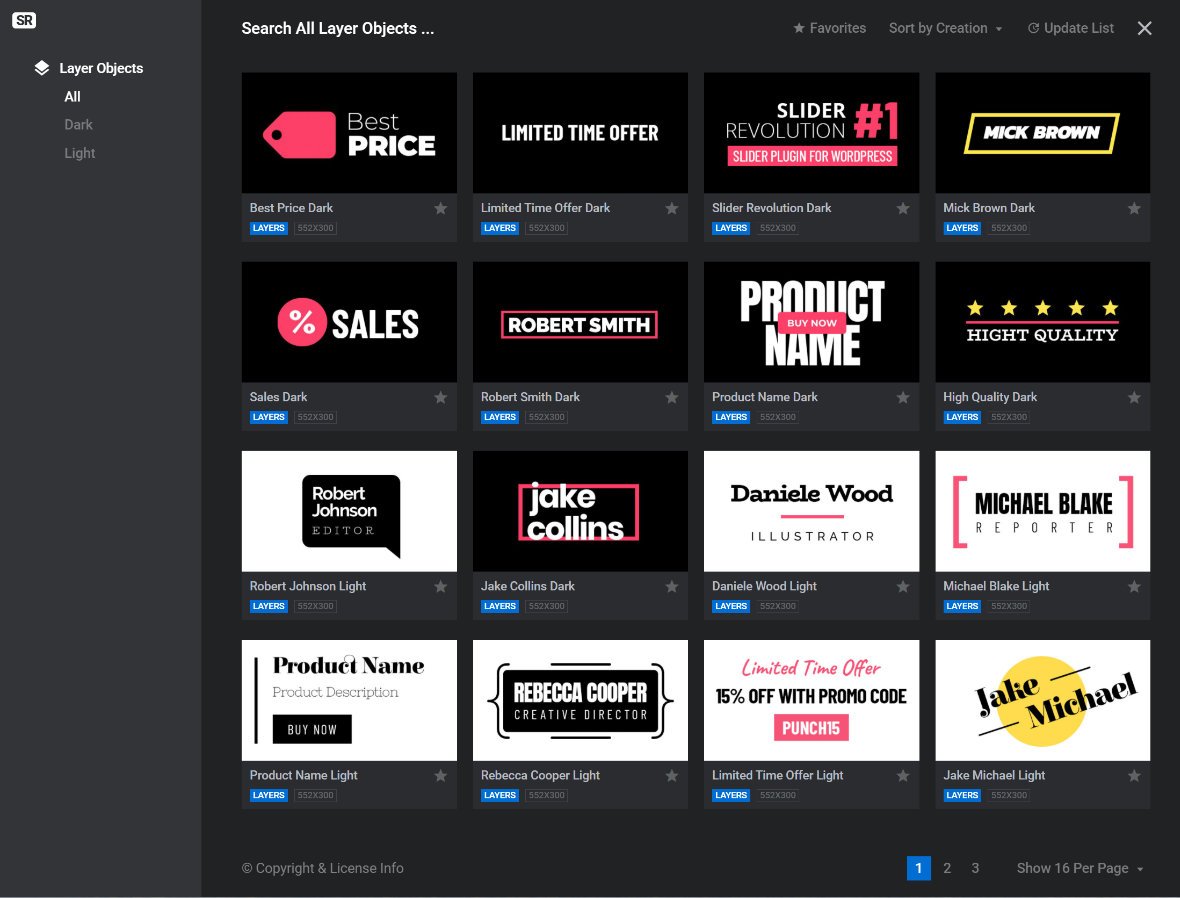
These layers focus on animated text, with several large headings or titles to choose from, as well as column based layouts of regular text.
In the left sidebar of the Layer Library you can filter the layers to show only dark or light color schemed layers.
Hover over any item in the list and you will see a “+” button display. An animated preview of that layer will also be shown next to it:

Click the “+” button to import it into your module. After importing you will see that in many cases the “layer” is actually a group with several child layers.
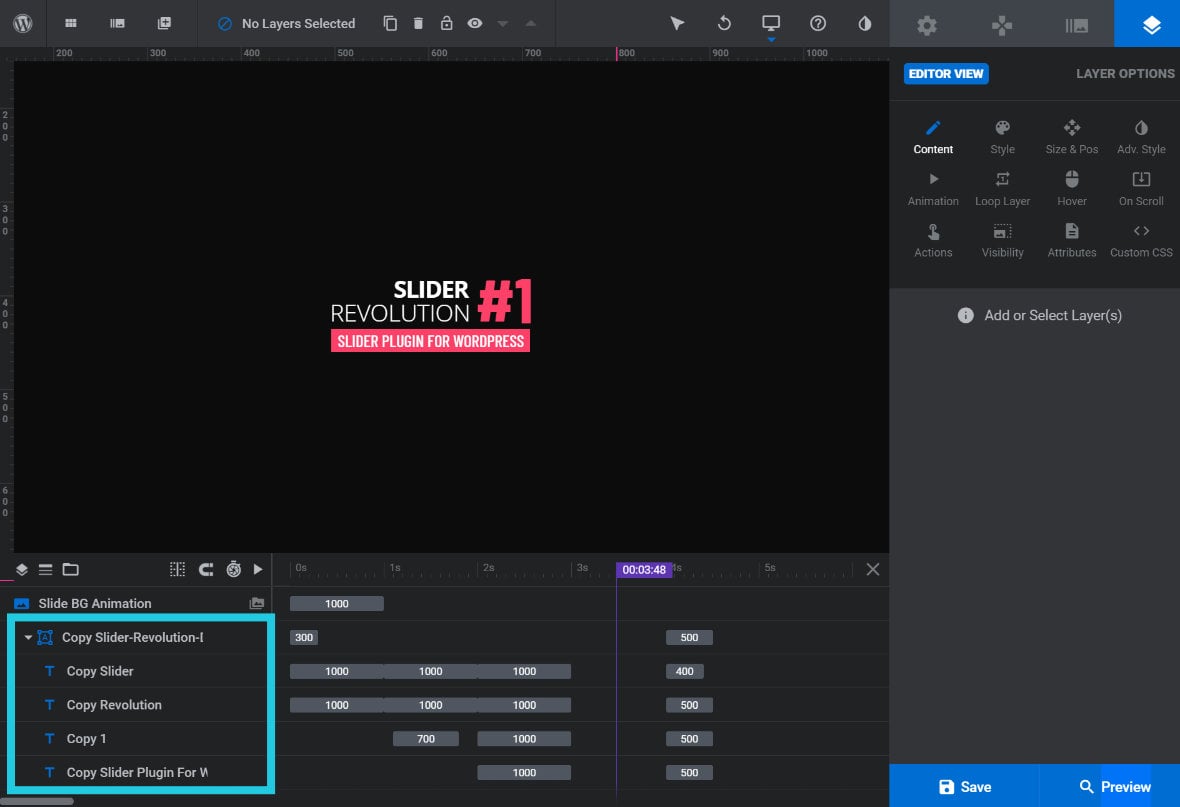
Having multiple layers instead of just one facilitates the range of animations and styles made available here.
Import Layer
Importing layers from other modules is a great way to piece together slides from content already installed on your site.
Note that there is no way to import a layer directly from a template, so if you do want to grab a specific layer you’ve seen in a template be sure to create a module from that template first.
When you click the Import Layer item a collection of the modules you have on your site will appear:
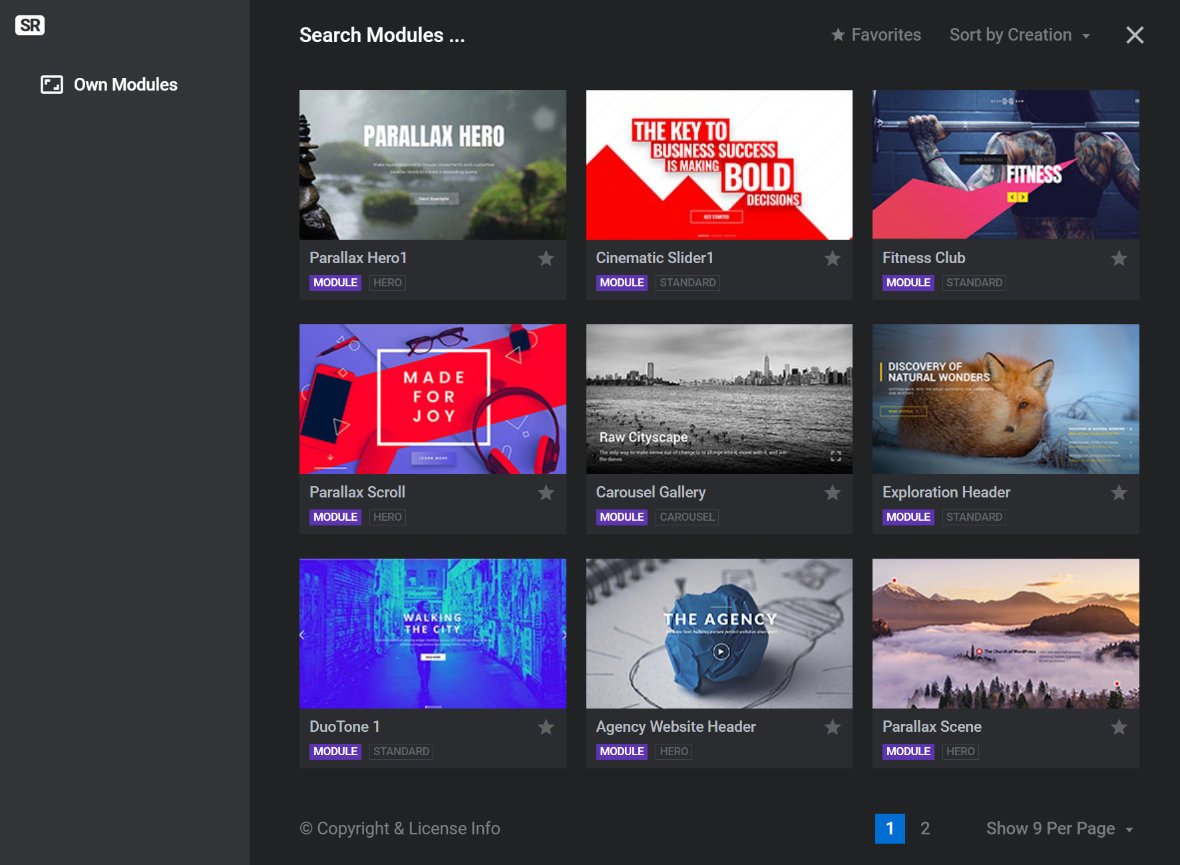
Hover over the module you want to import a layer(s) from and click the circular Slides icon that appears:
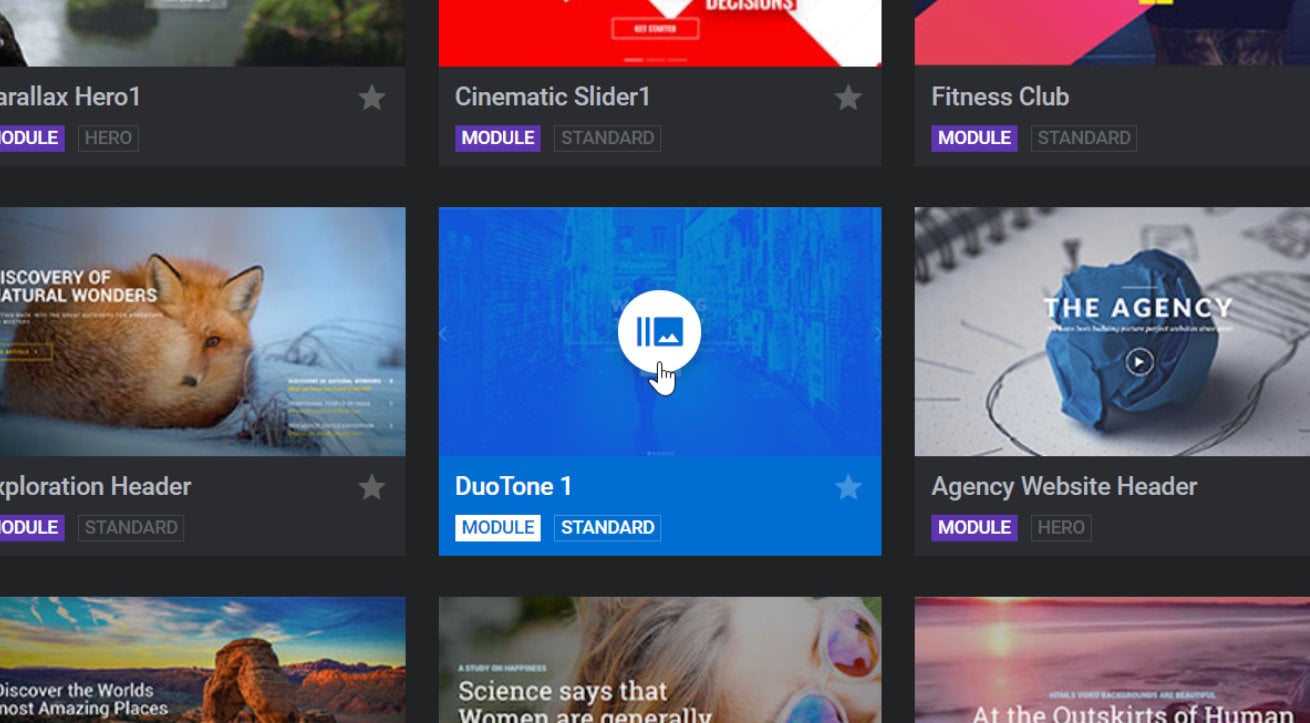
After selecting a module you’ll be shown all of the slides the module has, as well as any Global Layers [?]
A global layer is a special type of layer that appears on every slide of a module. You can have as many as you like in a module, and they are useful for adding items you always want to display, such as a logo, social media link or contact phone number.
Global layers are added in their own section of the module editor, have their own timeline, and are assembled in much the same way as you would create a regular slide.
Global layers are grouped together and can either all appear in front of your other layers, or all behind your other layers. However, you cannot have some global layers appear in front and some behind. it contains:
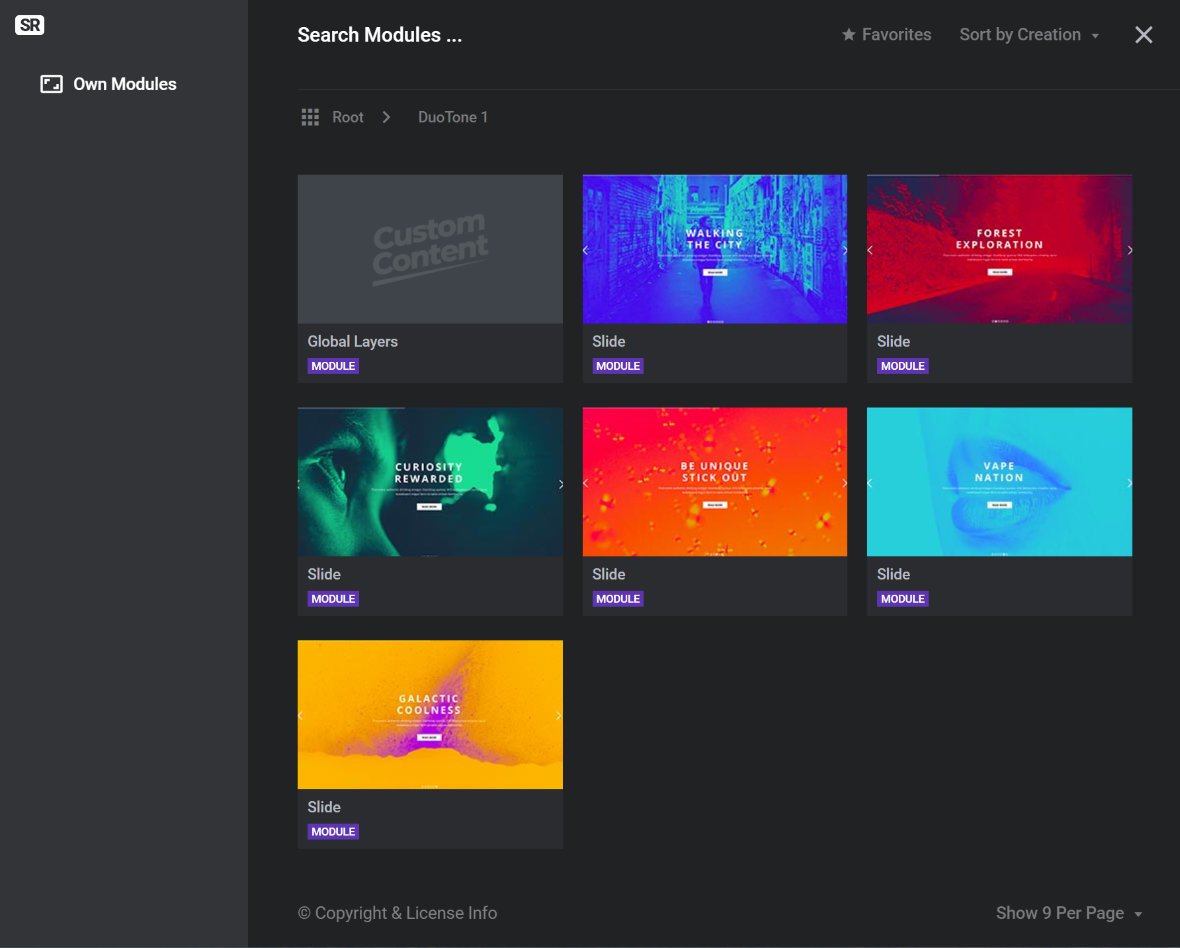
Choose one of the slides, or the Global Layers, and a dialogue box will open displaying a list of the layers contained therein. Note if the module you selected contains only one slide, it will automatically take you to its list of layers:

At the end of each row containing a layer name is a checkbox. Check the boxes of each layer you would like to import:

Once you have checked the layers you want to import, click the Import Selected Layers button. The layers you chose will be imported with all their settings and animations with their names preceded by the word “Copy”:
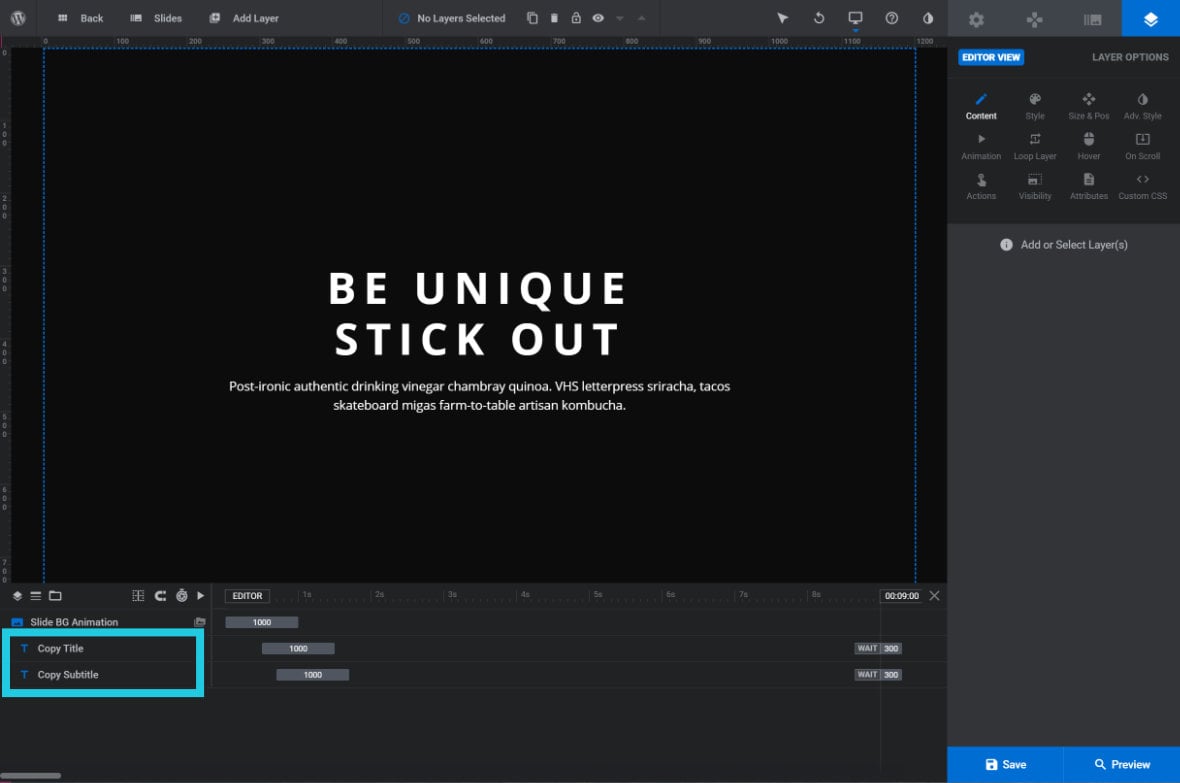
Up Next: Text, Buttons & Shadows
On top of being able to import slides and layers, there is still more pre-made content to take advantage of in the form of pre-formatted headlines, text content, buttons and shadow styles. You’ll learn how to access and use these on the next page of the manual.
